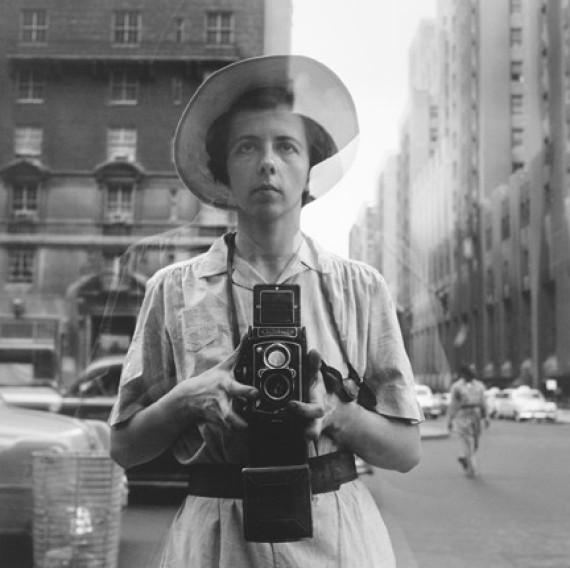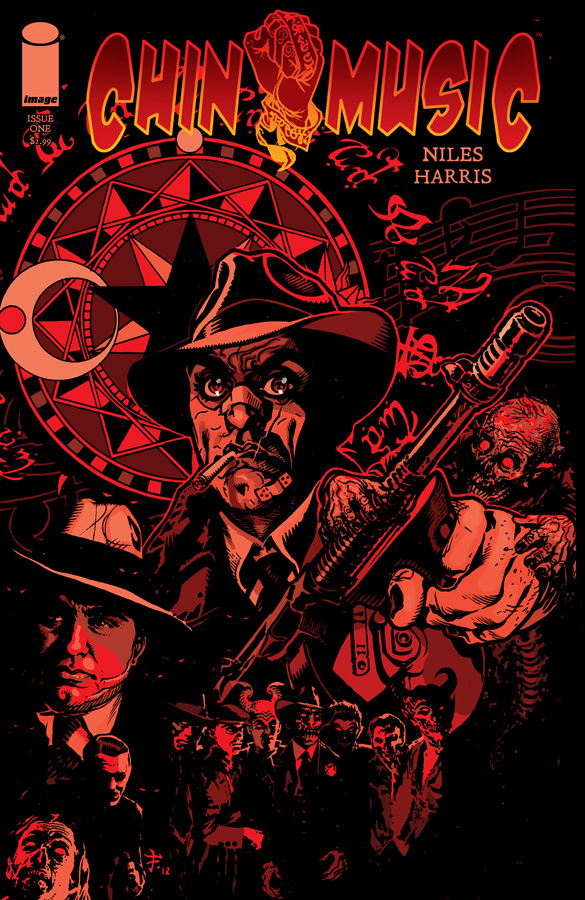Written and directed by John Maloof and Charlie Siskel
USA, 2013
There are two stories fighting for dominance in Finding Vivian Maier, and the battle sadly ends in a draw. The first half of the film appears to be primarily about John Maloof, its co-writer/producer/director, and his quest to make people appreciate the work of the late and mysteriously aloof nanny-cum-photographer Vivian Maier. The second half is much more about Maier’s life as well as attempting to figure out why she was so damn secretive in the first place, but without Maloof directly guiding the action or showing up on screen. The problem, perhaps, is that the finished product is just 83 minutes long, meaning that neither of these stories is terribly interesting enough to hold up as a feature film.
A few years ago, while working on a project about the history of Chicago, Maloof won a box of undeveloped negatives at an auction and soon realized that he’d stumbled across a treasure trove of striking, primarily black-and-white photography from an anonymous cameraperson. Over time, he was able to acquire all of the negatives, over 150,000 of them, and took it upon himself to find out who took all of these photos; eventually, he found Vivian Maier via a recently posted obituary. As he attempted to get a gallery exhibit of her work up and running, he and co-writer/producer/director Charlie Siskel began making this documentary, interviewing old friends as well as many of the children who she was nanny to over the years to solve the riddle that was the enigmatic and super-private Vivian Maier.
Everyone interviewed in the film, from world-class photographers to the grown-ups who were Ms. Maier’s charges to some of the surviving parents who hired her (including Phil Donahue, of all people), can’t agree on much about her personality or her past, but there’s one prevailing statement they almost all make: she would despise the level of attention being given to her or her work through the documentary and Mr. Maloof’s art-gallery wheeling and dealing. There’s a fascinating nugget of a conversation starter: does it matter that Vivian Maier, for whatever inward personal reasons, didn’t seem to want her photography displayed for public viewing? (At one point, Mr. Maloof reveals that he unearthed some detailed instructions she left behind should it ever be presented in a gallery, but this is a moment of rare opposition to what was Ms. Maier’s apparently reclusive nature.) On one hand, we can read into the constancy of the interviewees echoing this point a subtle admission of guilt on Mr. Maloof’s part; maybe he feels awkward for this project if it comes at the cost of ignoring a person’s privacy. But he seems pretty confident that this—figuring out her life and presenting her photography—is the right thing to do, and has no qualms about it.
Perhaps the most troubling aspect of Finding Vivian Maier is that, due in no small part to the fact that she’s passed away and remained relatively unknowable to anyone who came in contact with her, what we learn about Ms. Maier only raises impossible-to-answer questions. Consider the most harrowing moment in the film, when one of the women who was once taken care of by Ms. Maier describes how this woman physically abused her and force-fed her while she was a child. It’s one of the few talking-head segments that Maloof and Siskel don’t interrupt as frequently, but it’s also one that goes unanswered elsewhere. Was this common for Ms. Maier? Did she abuse the other children she took care of? We get the notion, from another of the parents who hired her, that she might’ve jumped from one family to another and was used to getting fired for various reasons, but this darker side of Ms. Maier is left unexplored. As such, it’s a bit baffling as to why the scene exists in the final film at all.
 At various moments in Finding Vivian Maier, which is a competently made documentary, it’s hard not to escape the notion that Vivian Maier, for all of her quirks and oddities, was nothing more than just a strange lady who lived her life differently than everyone else, and not for any grand reason. The idea that a great undiscovered photographer went unnoticed (possibly on purpose) until after she passed away is a fascinating one, but John Maloof and Charlie Siskel don’t seem to have enough confidence in either of the dual aspects of this feature to lend them enough time to play out in full.
At various moments in Finding Vivian Maier, which is a competently made documentary, it’s hard not to escape the notion that Vivian Maier, for all of her quirks and oddities, was nothing more than just a strange lady who lived her life differently than everyone else, and not for any grand reason. The idea that a great undiscovered photographer went unnoticed (possibly on purpose) until after she passed away is a fascinating one, but John Maloof and Charlie Siskel don’t seem to have enough confidence in either of the dual aspects of this feature to lend them enough time to play out in full.
— Josh Spiegel







